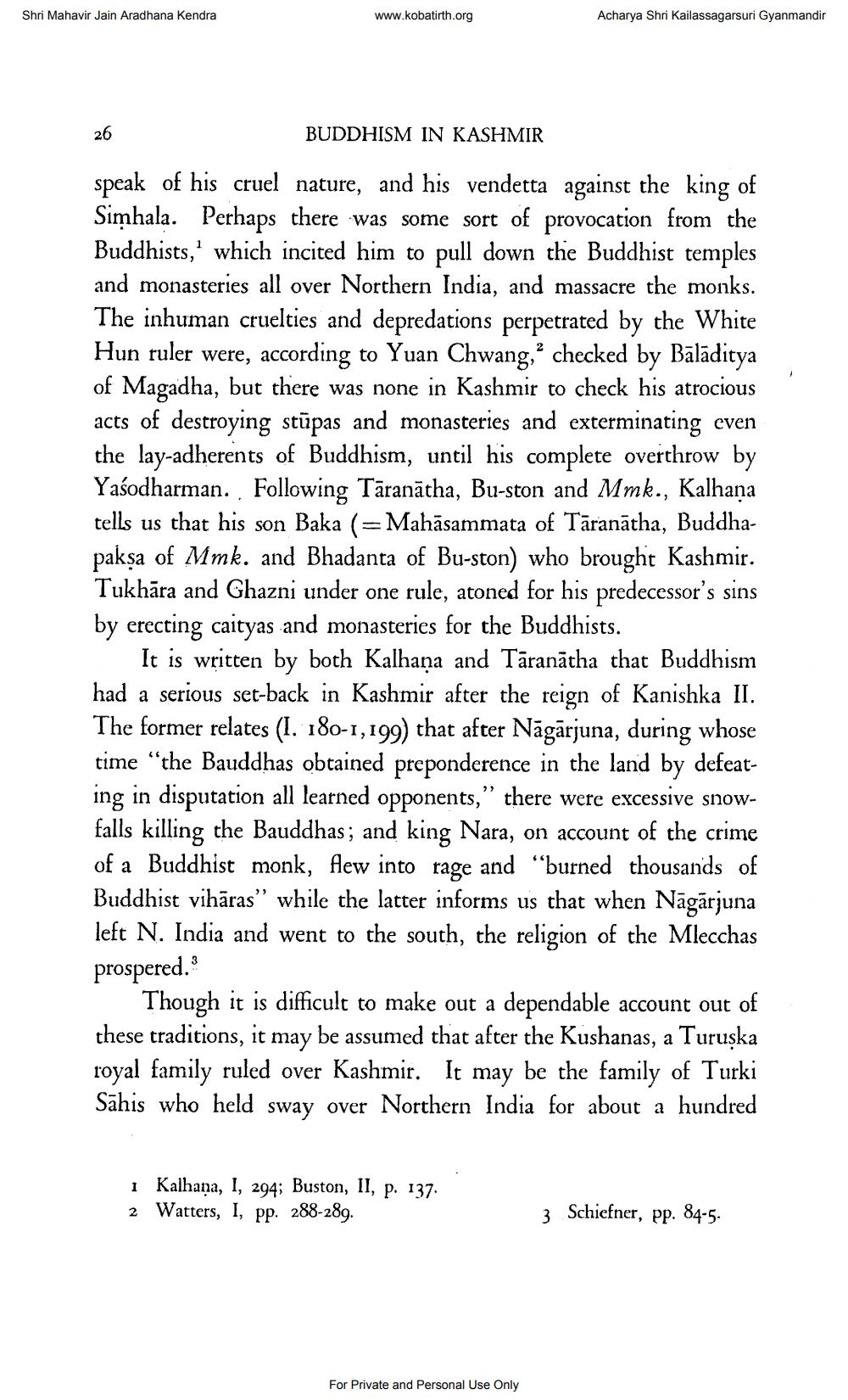________________
Shri Mahavir Jain Aradhana Kendra
www.kobatirth.org
Acharya Shri Kailassagarsuri Gyanmandir
26
BUDDHISM IN KASHMIR
speak of his cruel nature, and his vendetta against the king of Simhala. Perhaps there was some sort of provocation from the Buddhists, which incited him to pull down the Buddhist temples and monasteries all over Northern India, and massacre the monks. The inhuman cruelties and depredations perpetrated by the White Hun ruler were, according to Yuan Chwang," checked by Bālāditya of Magadha, but there was none in Kashmir to check his atrocious acts of destroying stūpas and monasteries and exterminating even the lay-adherents of Buddhism, until his complete overthrow by Yasodharman. Following Tāranātha, Bu-ston and Mmk., Kalhaņa tells us that his son Baka (=Mahāsammata of Tāranātha, Buddhapaksa of Mmk. and Bhadanta of Bu-ston) who brought Kashmir. Tukhāra and Ghazni under one rule, atoned for his predecessor's sins by erecting caityas and monasteries for the Buddhists.
It is written by both Kalhana and Taranātha that Buddhism had a serious set-back in Kashmir after the reign of Kanishka II. The former relates (I. 180-1,199) that after Nāgārjuna, during whose time “the Bauddhas obtained preponderence in the land by defeating in disputation all learned opponents,” there were excessive snowfalls killing the Bauddhas; and king Nara, on account of the crime of a Buddhist monk, Alew into rage and “burned thousands of Buddhist vihāras” while the latter informs us that when Nāgārjuna left N. India and went to the south, the religion of the Mlecchas prospered.
Though it is difficult to make out a dependable account out of these traditions, it may be assumed that after the Kushanas, a Turuska royal family ruled over Kashmir. It may be the family of Turki Sāhis who held sway over Northern India for about a hundred
1 Kalhana, I, 294; Buston, II, p. 137. 2 Watters, I, pp. 288-289.
3 Schiefner, pp. 84-5.
For Private and Personal Use Only




